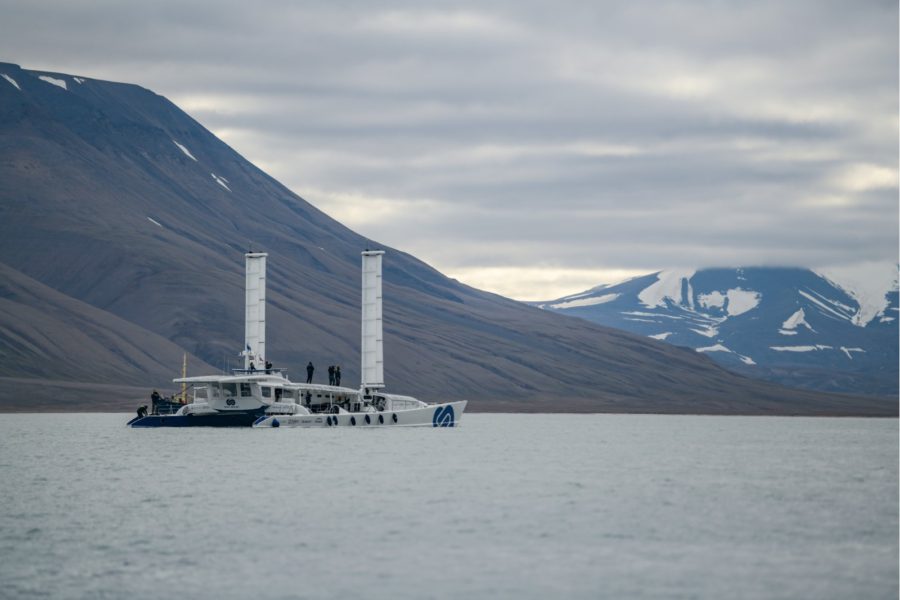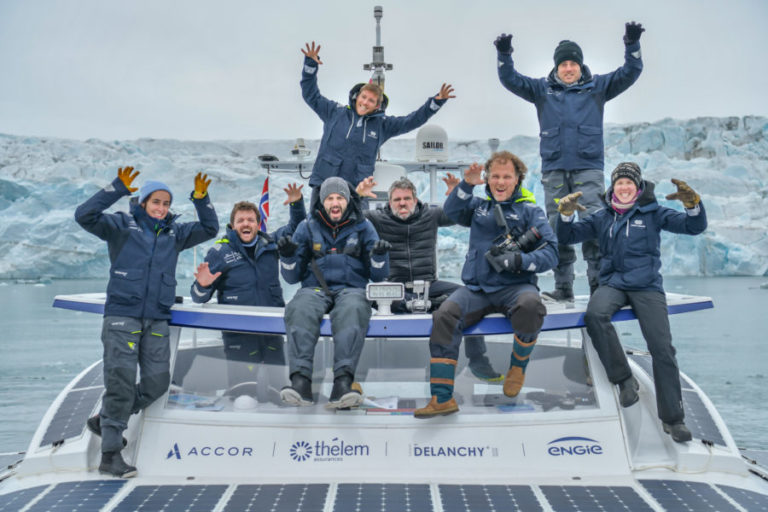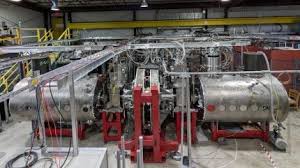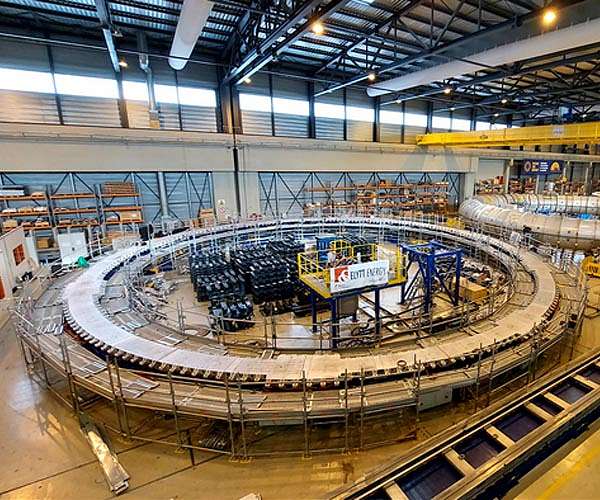Energy Observer has arrived on the island of Spitsbergen in the Svalbard Archipelago at 78° north latitude, powered solely by renewable energies and hydrogen. A historic challenge and a world first!

After 5700 km covered from St Petersburg under unfavorable weather conditions and in total energy autonomy, Energy Observer arrived this Saturday, 10th of August, in the Svalbard archipelago, considered by the scientific community as Ground Zero of climate change. For Energy Observer’s crew, this stopover is undoubtedly the most symbolic of their Northern Europe Odyssey.
Proving that it is possible to navigate in total autonomy, in extreme conditions by drawing energy from nature, without any ecological impact.
Since the beginning of the adventure, Energy Observer’s team had dreamed of taking up this challenge: to rally the Arctic in total energy autonomy, without CO2 emissions, fine particles or noise pollution that could disturb the ecosystems, in complete harmony with nature. They did it!

he crew of sailors, engineers and embarked reporters can be proud of the progress made since April 2017!
Joining this area, which is suffering the full impact of climate change, solely thanks to renewable energies and carbon-free hydrogen, is a strong symbol: it is now possible to develop environmentally friendly mobility, even in extreme weather conditions.
Victorien Erussard, Energy Observer’s captain: “We sailed from Russia to Spitsbergen in total energy autonomy and demonstrated that our energy mix is the future not only of maritime transport, but also of the new energy networks developed on land. Moreover, in such a remote and yet deeply impacted by climate change region, it is a strong symbol to arrive with this ship without an internal combustion engine or without the use of diesel unlike any other vessel, including sailboats. It is urgent to act on all fronts! We can’t wait any longer, the next few months are crucial. We really want to show that our resources are not unlimited and that we must cooperate with nature intelligently as we do with our boat: we produce what we consume, we go at the speed that REN’s allows us to reach! "
Spitsbergen, the epicenter of climate change: a strong symbol for collective awareness
In less than 20 years, the Arctic has lost 1.6 million square kilometers of ice. This accelerating ice melt has consequences for the local ecosystem, but also for the rest of the globe, in short, medium and long term.
Jérôme Delafosse, Expedition leader:
“Reaching the Arctic with renewable energies and hydrogen may have seemed impossible, but we have done it. Beyond the technological challenge, it is a political message that we wish to convey. Spitsbergen represents the ground zero, the epicenter of climate change, and it is here that the devastating effects of humanity on climate and biodiversity can best be seen. We wanted to prove that if we can sail in an extreme environment thanks to this ship, tomorrow everyone will be able to live thanks to REN’s and we will have a real tool to transform the world. It is true, we are the first to accomplish this feat, but this is not a competition, we are doing our part to raise awareness among citizens, decision-makers and industrialists about the absolute urgency to reconcile man and nature. The decisions we make in the coming years will have an impact on the next millennia.
We know time is running out. Last year’s IPCC report was released without appeal: we have very little time left to make a sustainable ecological transition. On the eve of the COP 25, which aims to relaunch the objectives set by the Paris Agreement in 2015, the movement must be accelerated (some scientists talk about 18 months). Our CO2 emissions must be reduced by 45% by 2030 if we want to contain the temperature increase to 1.5°C in the most optimistic scenario in the report. UN Secretary-General Antonio Guterres also warned of the extreme urgency of the situation in September 2018: “Every day we fail to act, is a day we get a little closer to the fate that none of us want – a fate that will resonate through generations in the damage caused to humanity and life on Earth”.
Going to Spitsbergen is, for the Energy Observer team, a crucial mission in order to raise awareness among the general public, and a call to action! We plan to document this experience through an event documentary on Canal +, a web series and meetings with specialists and pioneers of the ecological transition.
On their way, the team crossed Bjornoya, Bear Island, and its breathtaking cliffs more than 450 meters high, shelters for tens of thousands of birds, a paradise lost in the heart of the Barents Sea. The team also had the chance to observe many humpback whales and white-beaked dolphins, but sadly also plastic waste at sea and on the coast.
This trip also aims to strengthen Energy Observer’s role as an accelerator for research and development by testing innovative technologies in extreme conditions.
During the navigation from St. Petersburg, the crew and engineers worked hard on the Oceanwings® wind turbine propulsion wings. These wings, tested for the first time on a vessel of this size, have been optimized thanks to the feedback from sailing in complex weather conditions: little sun, strong headwinds, squalls, adverse seas…
Marin Jarry, Fleet Director and Second Captain: “The challenge of this last phase of navigation, 600 nautical miles between Tromso and Longyearbyen, was to validate the proper functioning of the wings and to push the boat and the entire energy chain to its limits under very harsh conditions! A real strategy game with rotating winds, very little sunshine, changing currents.
These significant system adjustments and optimizations took place in several phases.
In the Baltic Sea, the wings experienced technical problems with strong headwinds conditions. In the Norwegian Sea, the system was updated with the CNIM and VPLP in a degraded mode on the port wing resulting in manual management of their settings. Finally, in the icy Arctic Ocean, the system further evolved (encoders, sensor debugging, software evolution…) for optimized use during this long crossing.
Thus, Energy Observer continues more than ever her role as a R&D catalyst and continues to contribute in the deployment of innovative and efficient systems for navigation and in particular maritime transport.
Hydrogen once again played its key role in offsetting the intermittency of renewable energies. All the more so in high latitudes where the sun is lower and the cold requires even more precise management of energy costs and life on board.
Hugo Devedeux, systems engineer: “It was one of our biggest crossings. In waters at 5°C, it was necessary to take advantage of each technological brick. It is a real first to test the systems in such cold conditions and manage the energy costs for life on board and propulsion ».
Energy Observer continues her dual mission as a clean tech laboratory while testifying to the climate emergency, as the first French Ambassador for the sustainable development goals set by the UN in Agenda 2030. This arrival in Spitsbergen is a real technological first, but also the culmination of three years and 15,000 nautical miles of sailing around Europe.







